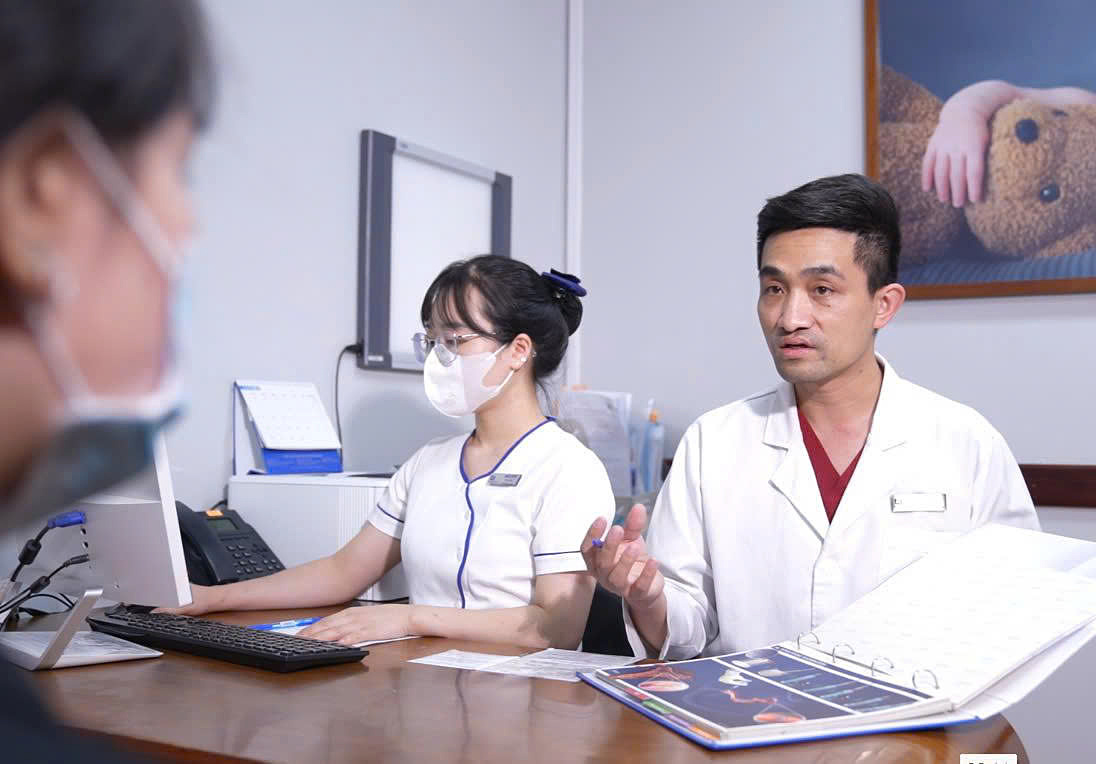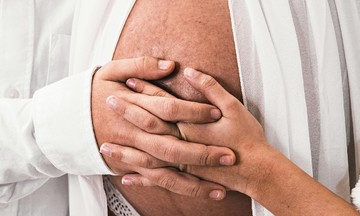In early June, Doai and her husband Hung, from Hai Phong, returned to Tam Anh General Hospital in Hanoi for another embryo transfer in hopes of having a second child. Their first son was born 5 years ago through in-vitro fertilization (IVF).
Married in 2011, Doai was diagnosed with hydrosalpinx (fluid blockage) in one fallopian tube. After surgery to clear the blockage, she conceived but unfortunately experienced a chemical pregnancy. Subsequent attempts at intrauterine insemination (IUI) and IVF at another hospital were unsuccessful. Six years later, the couple sought help at the Fertility Center of Tam Anh General Hospital in Hanoi.
Dr. Phan Ngoc Quy diagnosed Doai with uterine polyps, a benign growth that can hinder embryo implantation and increase the risk of miscarriage or failed embryo transfer. Additionally, the hydrosalpinx in her left fallopian tube could leak fluid into the uterus, causing inflammation, altering the endometrial environment, and impacting the chances of conception.
 |
Dr. Quy counsels a couple on infertility treatment. Photo illustration: *Tam Anh General Hospital* |
Dr. Quy recommended removing the affected fallopian tube to improve the chances of a successful embryo transfer. After the surgery, Doai underwent ovarian stimulation and egg retrieval for IVF, resulting in 8 three-day-old embryos and 4 five-day-old embryos. The first transfer of three three-day-old embryos was unsuccessful. Doctors prescribed medication to prepare her uterine lining and advised rest and improved health management before the next embryo transfer.
In 5/2019, two five-day-old embryos were transferred, resulting in a twin pregnancy. Sadly, one fetus did not survive, but the other developed healthily. Their son was born in 2020. The couple has 7 remaining embryos, which they plan to thaw for future attempts to expand their family.
 |
5-year-old Phong is Doai and her husband’s son. Photo: *Tam Anh General Hospital* |
According to Dr. Quy, blocked or fluid-filled fallopian tubes are common causes of infertility, often going undetected due to a lack of noticeable symptoms. Many cases are mistaken for common gynecological infections. Accurate diagnosis requires imaging techniques such as ultrasound, hysterosalpingography (HSG), or hysteroscopy. If both tubes are completely blocked, assisted reproductive technologies are necessary for conception.
Dr. Quy recommends that women planning a pregnancy, or couples experiencing difficulty conceiving, seek early consultation for timely intervention and to avoid missing the optimal treatment window.
Hang Tran
| Readers can submit questions about infertility here for doctors to answer. |












